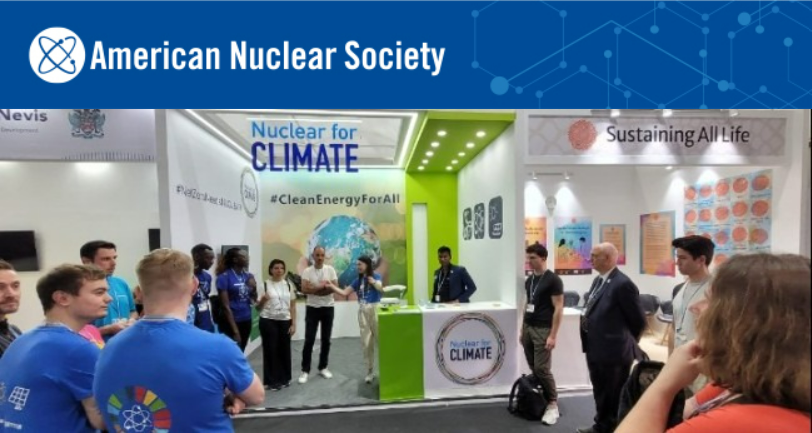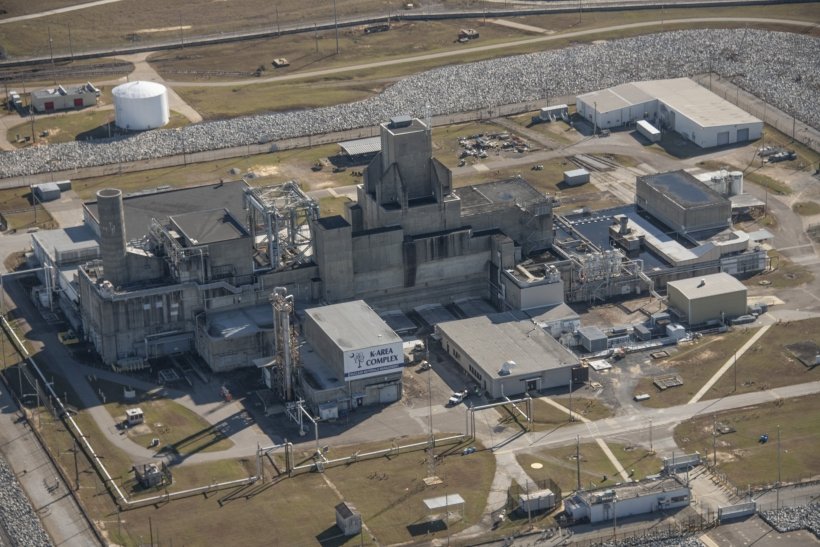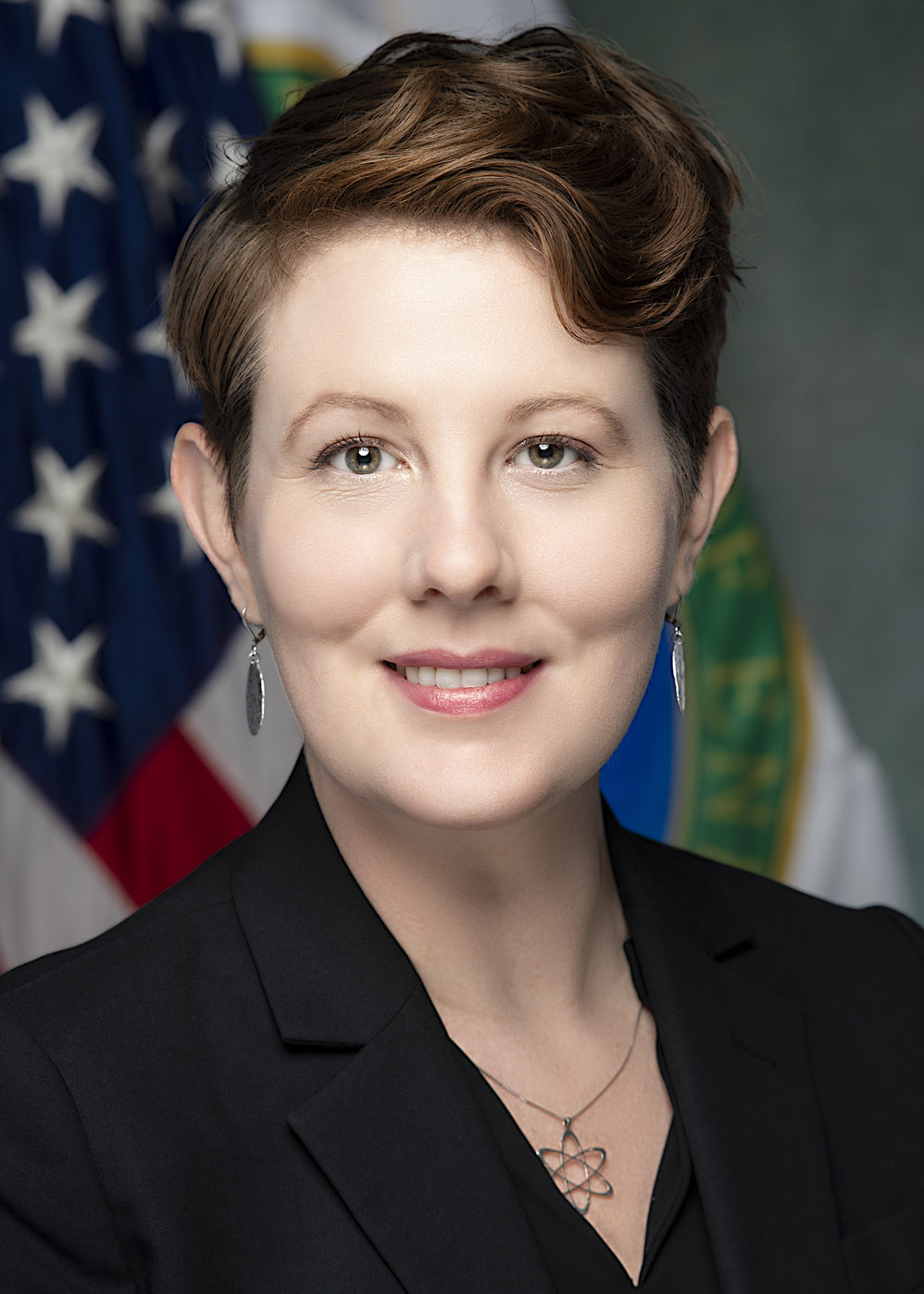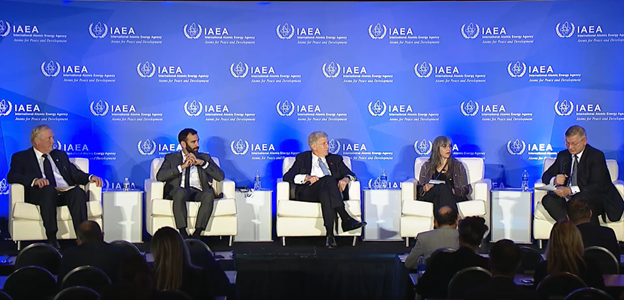Mexico's Laguna Verde nuclear power plant, on the coast of the Gulf of Mexico in the state of Veracruz.
An agreement between the United States and Mexico on civil nuclear cooperation has entered into force, the U.S. State Department announced last week. While first proposed in 2016 and finalized and signed in 2018, the pact only received approval from the Mexican Senate this March.
New open research publishing platform on the way for nuclear science and technology
The American Nuclear Society is launching an open research publishing platform with open research publisher F1000 Research Ltd., a subsidiary of Taylor & Francis Group.
After more than a year of discussion and planning, ANS Executive Director/CEO Craig Piercy recently signed an agreement with F1000 to create a new publishing platform that adopts the publisher’s innovative open research methodology and technology.
A generous, sustaining donation from ANS member Sushil C. Jain, P.E., will allow ANS to bring this plan from idea to reality. All content published on the new ANS F1000 platform will be free and open to the public. Both organizations are excited to begin this critical step forward, bringing ANS scholarly publications into the future.
The USS Rickover (SSN 795). (Photo: USS Hyman G. Rickover Commissioning Committee)
NBC Chicago featured a story last week about a visit to the Windy City by the commander and crew of the USS Hyman G. Rickover (SSN-795), the navy’s newest nuclear submarine. The submarine was christened in July 2021 and is currently undergoing trials out of Naval Submarine Base New London in Groton, Conn., before its expected commissioning in 2023. Reporter Charlie Wojciechowski described the sailors’ meetings with students from Chicago’s Rickover Naval Academy, along with the sailors’ visits to the Museum of Science and Industry and other city landmarks. He also interviewed Commander Matthew H. Beach.
A Northrop Grumman Antares rocket, with the Cygnus spacecraft Sally Ride aboard (so named for first American woman to fly in space), launched at 5:32 a.m. EST on November 7, from NASA's Wallops Flight Facility in Virginia. The rocket is captured just after liftoff in this still image from NASA’s live broadcast of the event.
Seeds from the joint laboratories of the International Atomic Energy Agency and the Food and Agriculture Organization of the United Nations (FAO) are onboard a Cygnus spacecraft launched from NASA’s Wallops Flight Facility in Virginia early on November 7. Now orbiting the Earth en route to the International Space Station, the seeds are part of a commercial resupply mission with a payload that includes resources to support more than 250 scientific investigations.
A screenshot from the Local 12 report. (Image: WKRC/Sinclair)
In May 2019, Zahn’s Corner Middle School in Pike County, Ohio, located within four miles of the former Portsmouth Gaseous Diffusion Plant (PORTS), was closed after local officials reported enriched uranium and transuranic radionuclides were detected inside the school and at outside air monitors.
Now, Cincinnati’s WKRC Local 12, a news affiliate of Sinclair Broadcast Group, is reporting that a private house in Lucasville, Ohio, 10 miles from the PORTS site, has been contaminated with enriched uranium.
Attendees at the Nuclear for Climate booth during the COP27 conference.
COP27, the 2022 United Nations climate change conference, is under way this week in Sharm el-Sheikh, Egypt. A delegation from the American Nuclear Society has traveled there to participate in Nuclear for Climate’s #NetZeroNeedsNuclear advocacy campaign. Nuclear for Climate, cofounded by ANS, is a grassroots organization made up of nuclear professionals and scientists from over 150 associations worldwide.
Curie and Meitner (Photos: Wikicommons)
Marie Curie was born in Warsaw in 1867 on this day, 155 years ago. Exactly 11 years later, in 1878, Lise Meitner was born in Vienna. November 7 is also the date when, in 1911, the Swedish Royal Academy of Science decided to award Curie a second Nobel Prize for her 1898 discovery of the elements radium and polonium (coincidentally, her 44th birthday). Curie, who at age 36 had shared the 1903 Nobel Prize in Physics with her husband, Pierre Curie, and Henri Becquerel, later accepted the chemistry prize on December 10, 1911. She remains to this day the only person—man or woman—to receive two Nobel Prizes in two different fields of science. (Linus Pauling was also awarded Nobel Prizes in two categories: chemistry and peace.) On this unofficial day of women in nuclear science, let’s take a moment to acknowledge the fundamental discoveries of both Curie and Meitner.
A view of Savannah River’s K Area, where employees began downblending plutonium in 2016. (Photo: DOE)
Contractor employees at the Department of Energy’s Savannah River Site in South Carolina recently exceeded their plutonium downblending goal for 2022 ahead of schedule as part of the ongoing activities to remove Pu from the state, the DOE’s Office of Environmental Management (EM) announced.
From left: Kimberly Cook-Nelson, John Dinelli, and Bill Maguire. (Photos: Entergy)
New Orleans-based Entergy Corporation yesterday announced changes to its senior leadership, including the selection of Kimberly Cook-Nelson as executive vice president and chief nuclear officer, replacing Chris Bakken.
Cook-Nelson, Entergy’s first female CNO, will be based in Jackson, Miss., the company’s nuclear operations headquarters. She joined Entergy in 1996 as a design engineer at the Waterford nuclear plant in Killona, La., rising to general manager of plant operations in 2011. Most recently, she held the position of chief operating officer, nuclear operations. (In addition to the Waterford facility, Entergy owns and operates Arkansas Nuclear One in Russellville, Ark., Grand Gulf in Port Gibson, Miss., and River Bend in St. Francisville, La.)
Nicholas Spivey, left, an SRNL mechanical engineer, and Kurt Gerdes, director of EM’s Office of Technology Development, use virtual reality simulation of an EM worksite during meetings held at the IHMC in Pensacola, Fla. (Photo: DOE)
For the first time since forming in 2020, more than 40 members of a Department of Energy team met in person to evaluate technologies, including exoskeletons and wearable robotic devices, that could be adapted to the cleanup mission of department’s Office of Environmental Management (EM), helping improve the safety and well-being of its workers.
Participating in the forum were (from left) John Hopkins (NuScale Power), Renaud Crassous (EDF), Daniel Poneman (Centrus Energy), Adriana Cristina Serquis (CNEA), and Boris Schucht (Urenco).
The nuclear industry leaders assembled in Washington, D.C., last week to discuss small modular reactor supply chains agreed that lost generation capacity from the expected retirement of hundreds or thousands of coal power plants over the next decade—a cliff, in one panelist’s words—represents an opportunity that developers of SMRs and advanced reactors are competing to meet.
“I think in total 80 projects are ongoing,” said Boris Schucht, panel moderator and chief executive officer of Urenco Group, as he opened the forum. “Of course not all of them will win, and we will discuss today what is needed so that they can be successful.”









.png)








